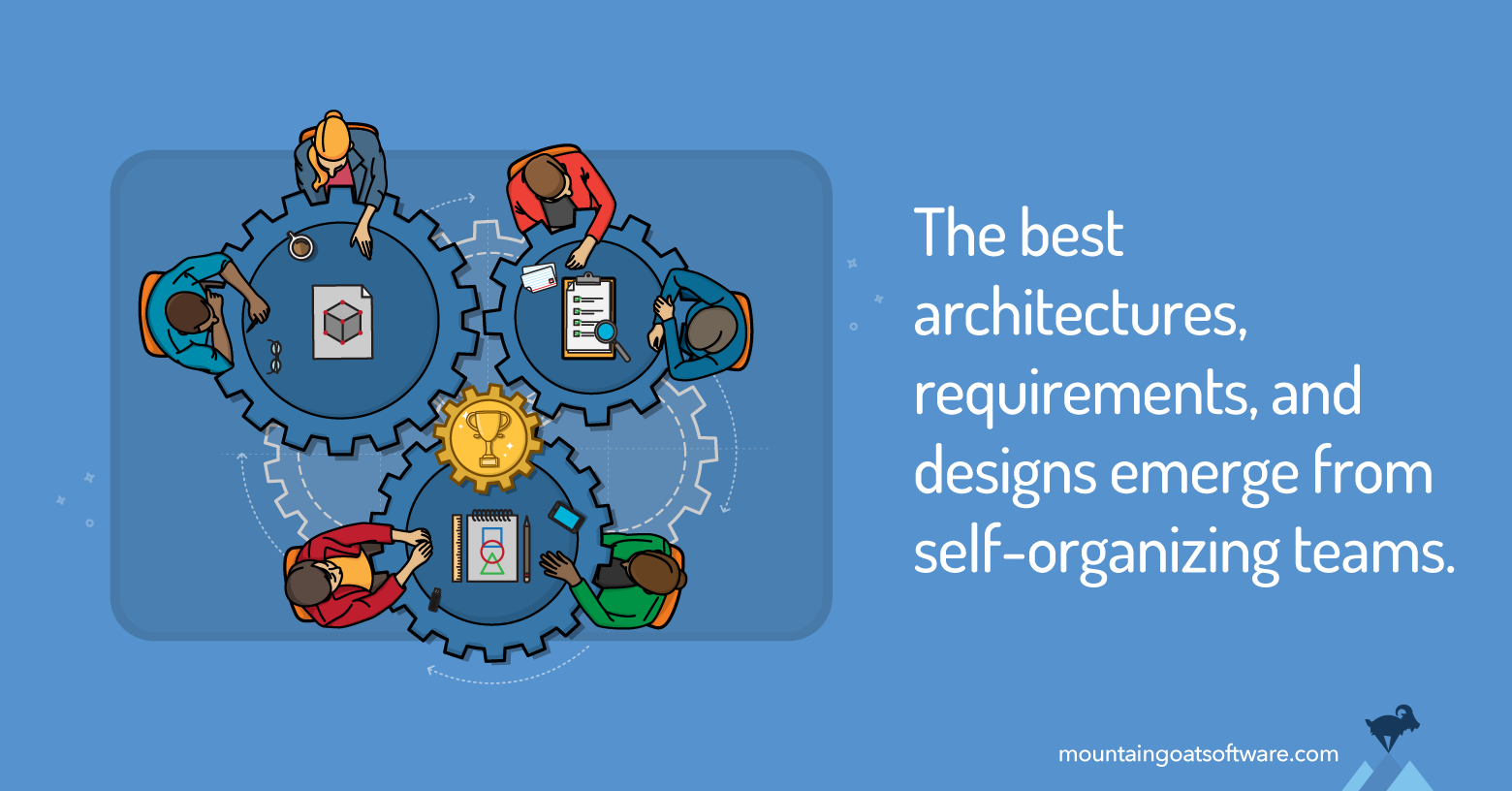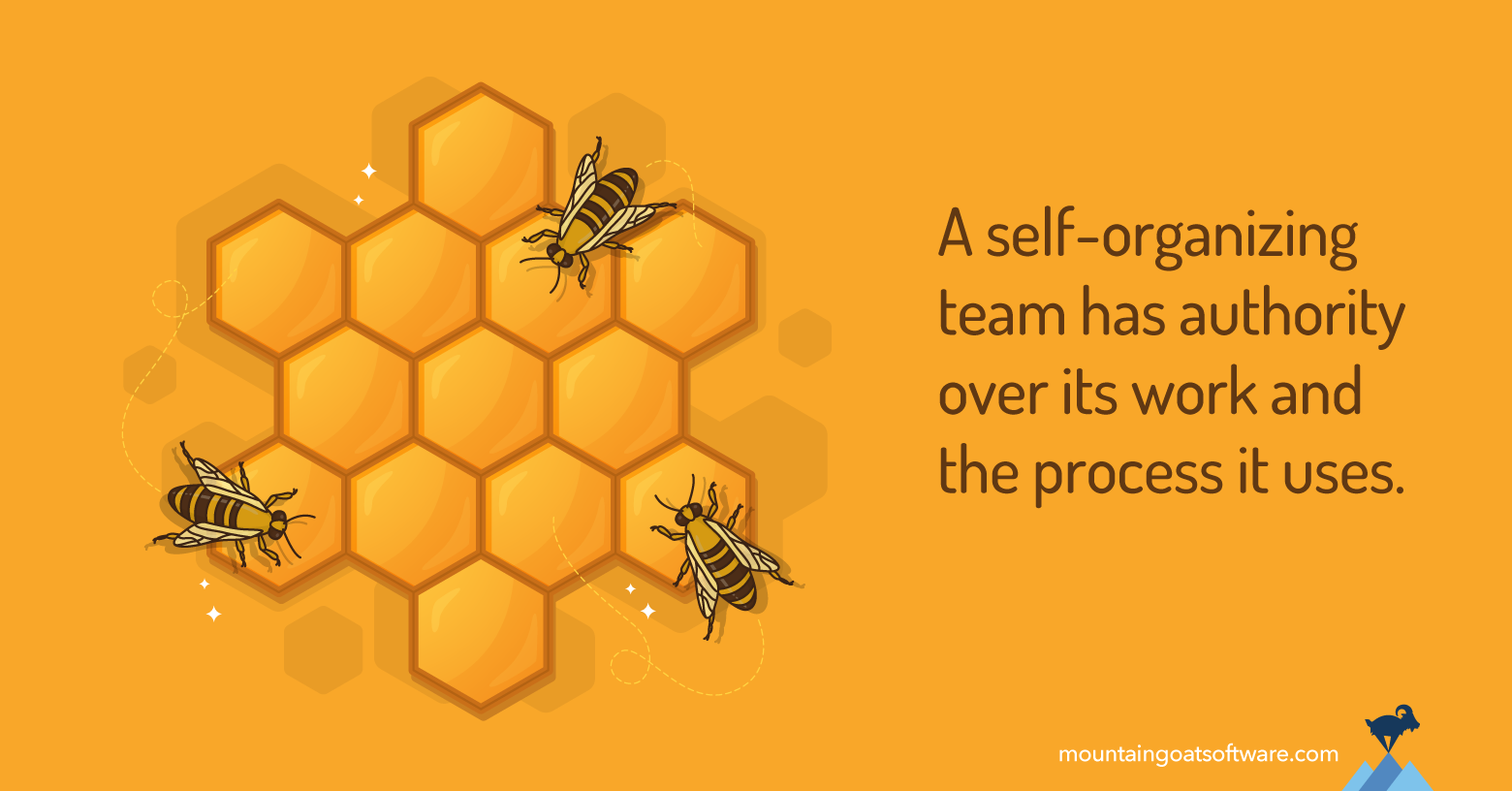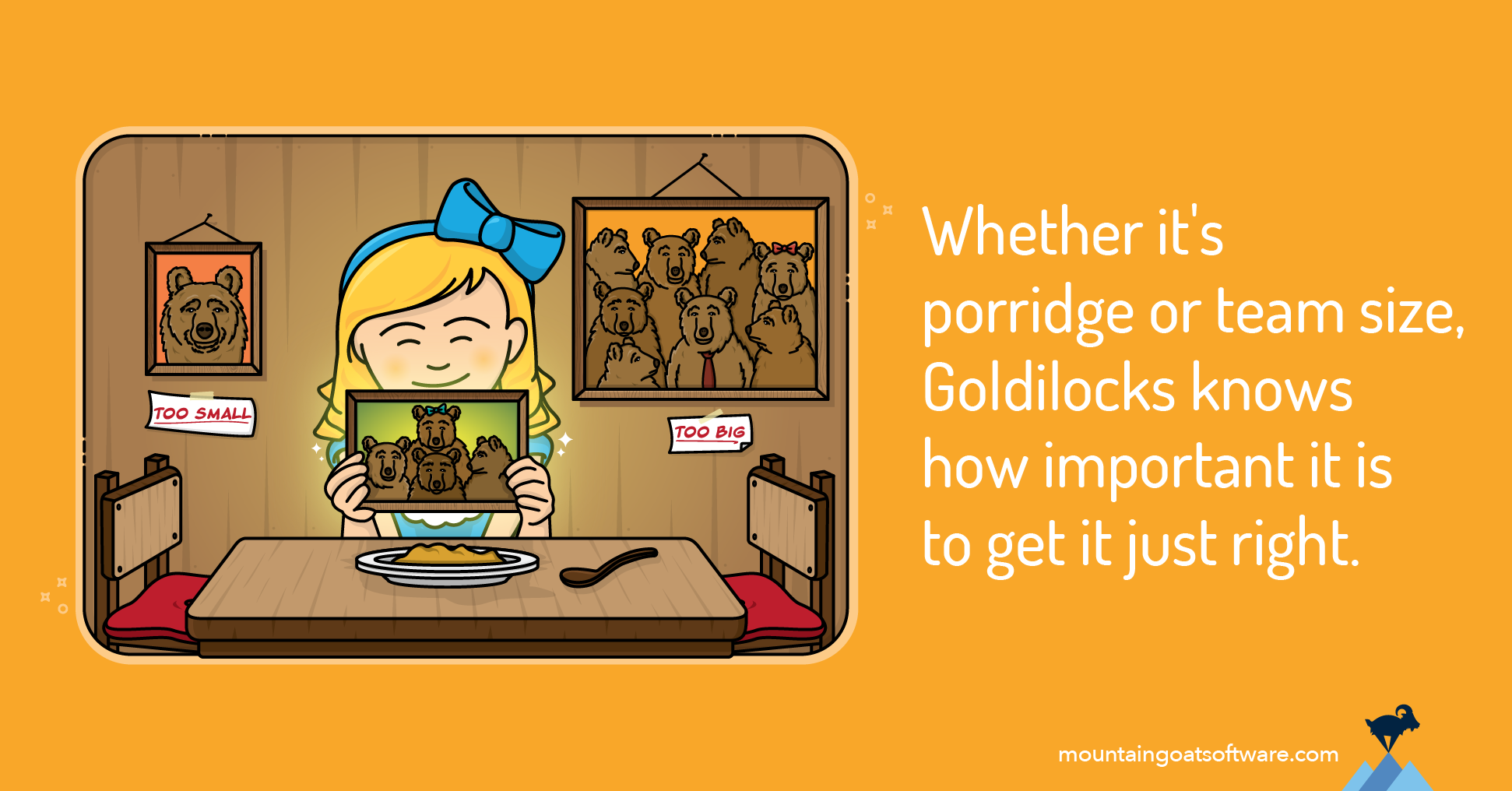Self-organizing / self-managing teams are a cornerstone of agile project management but they’re often misunderstood. Many mistakenly believe these agile teams operate without structure or guidance. Nothing could be further from the truth.
This article explores what self-organizing teams are, how leaders can support them effectively, and the powerful outcomes that emerge from self-organizing teams.
What Are Self-Organizing Teams?
A self-organizing (aka self-managing) team is one that has the ability and autonomy to determine how best to accomplish its work within the boundaries and constraints put in place by its leaders.
Self-organization doesn’t mean the team is unmanaged or anarchic; it means the team organizes itself around tasks, responsibilities, and collaboration.
In the chapter “Seven Leaders for Guiding the Evolving Enterprise” from Clippenger’s The Biology of Business, contributor Philip Anderson addresses some of the misunderstandings about self-organization:
“Self-organization does not mean that workers instead of managers engineer an organization design. It does not mean letting people do whatever they want to do.
“It means that management commits to guiding the evolution of behaviors that emerge from the interaction of independent agents instead of specifying in advance what effective behavior is.”
Self-managing agile teams have two types of authority: They have authority over 1) their work and 2) the process they use. They do not have authority over who is on the team or the team’s purpose.
For more on how self-organizing teams fit into Richard Hackman's authority hierarchy, read "Two Types of Authority Leaders Must Give Self-Organizing Teams."
Self-Organizing Teams Take Ownership
The idea behind fostering self-managing teams is that teams are encouraged to fully own the problem of performing their work.
Self-organizing teams prioritize collaboration over individual efforts. That’s one reason the daily scrum is such an important part of a Scrum team’s success: it allows all the team members to coordinate daily on how they will meet their goal, and self-organize to solve problems when something could impede their plan.
Self-organization implies that not every agile team will choose to organize themselves the same way, and that’s OK. For example, consider an agile team trying to problem-solve who should make key technical decisions.
Some teams might decide that one person will make all key technical decisions.
Other teams might decide to split decisions along technical boundaries: The database expert makes database decisions, but the most experienced Python programmer makes Python decisions.
Still other teams might decide that whoever is working on the feature makes the decision but shares the results with the team.
Self-management means the teams, not their Scrum Masters or managers, make these determinations.
Factors to Consider when Forming Agile Teams
A common concern about self-managing teams is “We cannot just put eight random individuals together, tell them to self-organize, and expect anything good to result.”
Well, I don’t know if we can put eight random people together and expect anything either, but I do know that an agile team should not be a random collection of people.
Self-organizing doesn’t mean randomly put together. Those in the organization responsible for initiating an agile project should expend a lot of effort in selecting the individuals who will comprise the team(s) for that project.
Here are five factors for management to keep in mind when structuring teams:
1. Include all necessary disciplines
Agile requires cross-functional teams, meaning they possess all the skills and expertise necessary to go from idea to implemented feature. Initially, this can lead to teams being slightly larger than desired.
That’s OK. Over time, individuals will learn some of their teammates’ skills as a natural result of being on a Scrum team. As some team members develop broader skills, others can be moved onto other teams.
2. Mix technical skill levels
Subject to considerations of team size, strive to balance skill levels on the team. If a team has three senior programmers and zero less-experienced programmers, the senior programmers will need to code some low-priority features that they could find boring.
Not only might a junior programmer have found such features enjoyable to work on, but that programmer would also benefit from learning through association with the senior programmers.
3. Balance domain knowledge
Strive, too, for a balance between those with deep knowledge of the domain in which you are working or the problem you are attempting to solve.
This is not to say that if you have the opportunity to assemble a team entirely of domain experts, you shouldn’t take it. Rather, consider the long-term goals of the organization.
One of those goals is likely building domain knowledge throughout the organization. You’ll have a hard time achieving that if you put all of the domain experts on one team.
4. Seek diversity
Diversity can mean many different things—gender, race, and culture being just three of them. Perhaps equally important is how individuals think about problems, how they make decisions, how much information they need before they decide, and so on.
Research shows that homogeneous teams reach consensus more quickly than heterogeneous teams, but unfortunately they do so by failing to consider all options.
5. Consider persistence
It takes time for agile team members to learn to work well together. Strive, therefore, to keep team members together who have worked well together in the past.
When forming a new team, consider how long members will be able to work together before some or all are dispersed to other commitments.
The Role of a Leader in Self-Organizing Teams
Another common misconception about self-organizing teams is that they don’t need leaders or managers. Leadership is crucial for agile teams—it just looks different from traditional command-and-control models.
A leader’s role in self-managing teams is to set appropriate challenges and remove impediments. Here’s a typical process for leading self-organizing teams:
- Define the vision and goals
- Ensure alignment with organizational strategy
- Remove obstacles that block progress
- Encourage team growth and learning
A manager’s role is to foster the environment in which self-organization can thrive. They act more as guides than bosses.
How to Lead Self-Organizing Teams without Undermining Autonomy
Self-organization is a critical capability that enables high-performing agile teams to deliver value frequently and quickly. Leading self-organizing teams effectively requires restraint and intention:
- Set a few clear boundaries and expectations. Teams need constraints to innovate effectively. But if you overly constrain them, you will impede self-organization and creativity. Prioritize.
- Encourage team ownership. Let teams take responsibility for decisions and results. The best Scrum teams are self-sufficient.
- Support rather than steer. Be available as a coach, not a taskmaster.
- Promote continuous improvement. Help teams reflect and adapt through sprint retrospectives and feedback loops.
Servant leadership is a helpful model here. Serve the team’s success by amplifying their autonomy, not replacing it.
Agile Leadership & the Art of Subtle Control
In the original paper describing Scrum, Takeuchi and Nonaka identified “subtle control” as one of its six principles. They list staffing decisions as a key management task.
“Selecting the right people for the project team while monitoring shifts in group dynamics and adding or dropping members when necessary [is key].
“‘We would add an older and more conservative member to the team should the balance shift too much toward radicalism,’ said a Honda executive. ‘We carefully pick the project members after long deliberation. We analyze the different personalities to see if they would get along.’” So how does someone achieve this kind of subtle control? Consider the following example.
An example of subtle control
Suppose you are a Scrum Master, coach, manager, or leader for a team. You noticed that one team member is consistently domineering and no one is willing to stand up to him.
This team has self-organized—consciously or not it has chosen to let one member make all key decisions. You recognize, though, that if one person continues to make all the decisions, it will impede the team’s efforts to improve.
You have a few options.
You could have a private conversation with the domineering team member. You might help them see that even in situations where they’re sure they know the “right” thing to do, they’ll learn by sometimes giving others a chance to express their thoughts before voicing their own opinion. You might also suggest they take care to present their thoughts as an opinion rather than as an unchallengeable decision.
You could enlist the team member’s assistance as a mentor to the others. Their job would be to sideline-coach the other team members, allowing them to practice such that they will make the right decisions on their next projects, where that domineering team member may not be there to make them.
If neither of those conversations work, you might go further, and change the team’s dynamics. Here are a few examples among the many ways to accomplish this:
- Ask management to add someone new to the team who is likely to stand up to the outspoken team member.
- Suggest that someone from the enterprise architecture group attend key meetings—someone with the experience, background, and propensity to challenge the team member.
The point is that no matter the specific problem, if the team has self-organized in a way that impedes team progress, you’ll need to find a way to agitate, stir up, or otherwise disturb the status quo so that the team adjusts and hopefully reorganizes in a more productive way.
What Emerges from Effective Self-Organizing Teams
One of the principles from the Agile Manifesto is “The best architectures, requirements, and designs emerge from self-organizing teams.”
Well-formed and well-led self-organizing teams foster powerful outcomes:
- Innovation: Teams that own their process are more likely to experiment and find better solutions.
- Resilience: Self-management builds problem-solving skills and confidence.
- Engagement: Autonomy and purpose drive motivation.
- Speed: Decision-making is faster when teams don’t need top-down approvals.
These benefits aren’t automatic. They emerge when management invests in the conditions that allow self-organization to flourish.
There is more to leading a self-managing team than buying pizza and getting out of the way.
Teams don’t need their Scrum Masters, managers, and coaches to have all the answers. What teams need is for their leadership to create a space where agility can emerge organically.
More Help for Agile Teams
Working on a Scrum or agile team requires new skills and mindset shifts, for both the team and its leaders. Invest in development opportunities for team members to boost communication and collaboration.
If you want some help getting your team on the same page about agile and Scrum, our Working on a Scrum Team course is always available as a private course and is occasionally offered as a public course as well. Learn how to snag a seat for yourself, for your whole team, or for some subset of your team.
FAQs about Self-Organizing / Self-Managing Teams
What is the role of a leader in a self-organizing team?
Leaders and managers in self-organizing teams act as facilitators, not dictators. They provide clear goals, remove obstacles, support team development, and foster an environment where the team can take ownership of how work gets done. They don't direct work; they enable it.
Can self-managing teams succeed without leadership?
Maybe—but why would you try? Teams that self-organize to manage their internal processes still rely on leadership for direction, alignment with broader goals, and support. A lack of leadership often leads to confusion, misalignment, or stalled progress. Effective leadership may be subtle but it is essential for success.
How do self-managing teams make decisions?
They use collaborative decision-making, ranging from consensus to consultation to delegated authority within the team. Roles and responsibilities may shift dynamically based on expertise, availability, or team agreements.
Are self-organizing teams really more effective?
Yes, when thoughtfully formed and well-led. Self-organizing teams often deliver better innovation, faster results, and higher engagement. These outcomes emerge because agile team members feel accountable, empowered, and connected to their work.
How are self-organizing teams formed?
They are carefully assembled based on skills, experience, personality fit, and shared goals—a random group won’t work. Leaders play a key role in ensuring that the team composition supports self-organization from the outset.
Last update: July 15th, 2025












